.jpg)
Soviet military officials view the remains of cosmonaut Vladimir Komarov.
Mankind’s road to the stars had its unsung heroes. One of them was the Soviet cosmonaut Vladimir Komarov.
His spaceflight on Soyuz 1 made him the first Soviet cosmonaut to fly into outer space more than once, and he became the first human to die on a space mission—he was killed when the Soyuz 1 space capsule crashed after re-entry on April 24, 1967, due to a parachute failure.
However, because he died when the capsule crashed into the ground, he is not considered the first human fatality in outer space.
The above photograph shows the charred remains of Komarov being looked over by Soviet officials during his open-casket funeral. Only a chipped heel bone survived the crash.
All this foretold tragedy started with the 50th anniversary of the founding of the Soviet Union, and the government demanded something big from the space program.
Leonid Brezhnev, leader of the Soviet Union, decided to stage a spectacular mid-space rendezvous between two Soviet spaceships.
The plan was for two Soviet Space vehicles to launch into space and perform a dramatic orbital docking that would allow cosmonauts to move between ships.
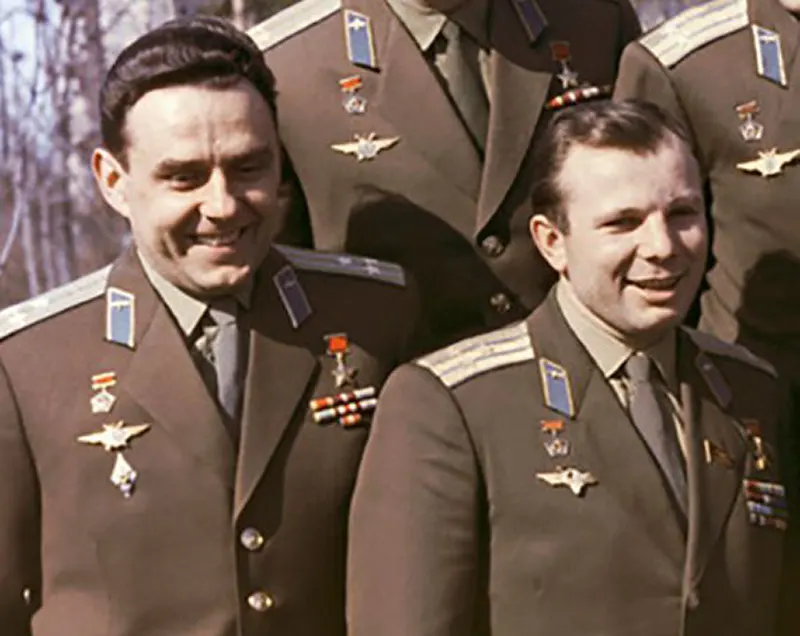
The first capsule to be launched would be the Soyuz 1, with Komarov inside. The next day, a second vehicle (Soyuz 2) would take off, with two additional cosmonauts; the two vehicles would meet, dock, Komarov would crawl from one vehicle to the other, exchanging places with a colleague, and come home in the second ship.
Brezhnev made it very clear he wanted this to happen. Komarov was selected to command the Soyuz 1, in 1967, with Yuri Gagarin as his backup cosmonaut.
Both knew the space capsule was not safe to fly, but everyone in the space program was terrified of Brezhnev’s reaction to the mission being delayed or scrubbed. Komarov told friends he knew he would probably die.
.jpg)
Vladimir Komarov was among Gagarin’s best friends. Here they’re seen hunting together.
But he wouldn’t back out because he didn’t want Gagarin to die. Vladimir Komarov was among Gagarin’s best friends.
Their families often got together, and on rare times when both men were free, they would go hunting together.
They were best friends who were also part of a very small fraternity of men who had stared down death itself in order to travel to space.
Gagarin suggested that the mission should be postponed. The question was: Who would tell Brezhnev? Gagarin wrote a 10-page memo and gave it to his best friend in the KGB, Venyamin Russayev, but nobody dared send it up the chain of command.
With less than a month to go before the launch, Komarov realized postponement was not an option. One of Komarov’s friends in KGB suggested that he should refuse to fly.
According to the book Starman (by Jamie Doran and Piers Bizony), Komarov answered: “If I don’t make this flight, they’ll send the backup pilot instead”. That was Yuri Gagarin.
Vladimir Komarov couldn’t do that to his friend. “That’s Yura”, the book quotes him saying, “and he’ll die instead of me. We’ve got to take care of him.” Komarov then burst into tears.
As the launch date drew near, everyone was more and more pessimistic. There were serious problems that would make this machine dangerous to navigate in space.
The pre-tests flights had been disconcerting, the technicians who had inspected the Soyuz 1 had found 203 structural problems. An atmosphere of foreboding prevailed at the cosmodrome.
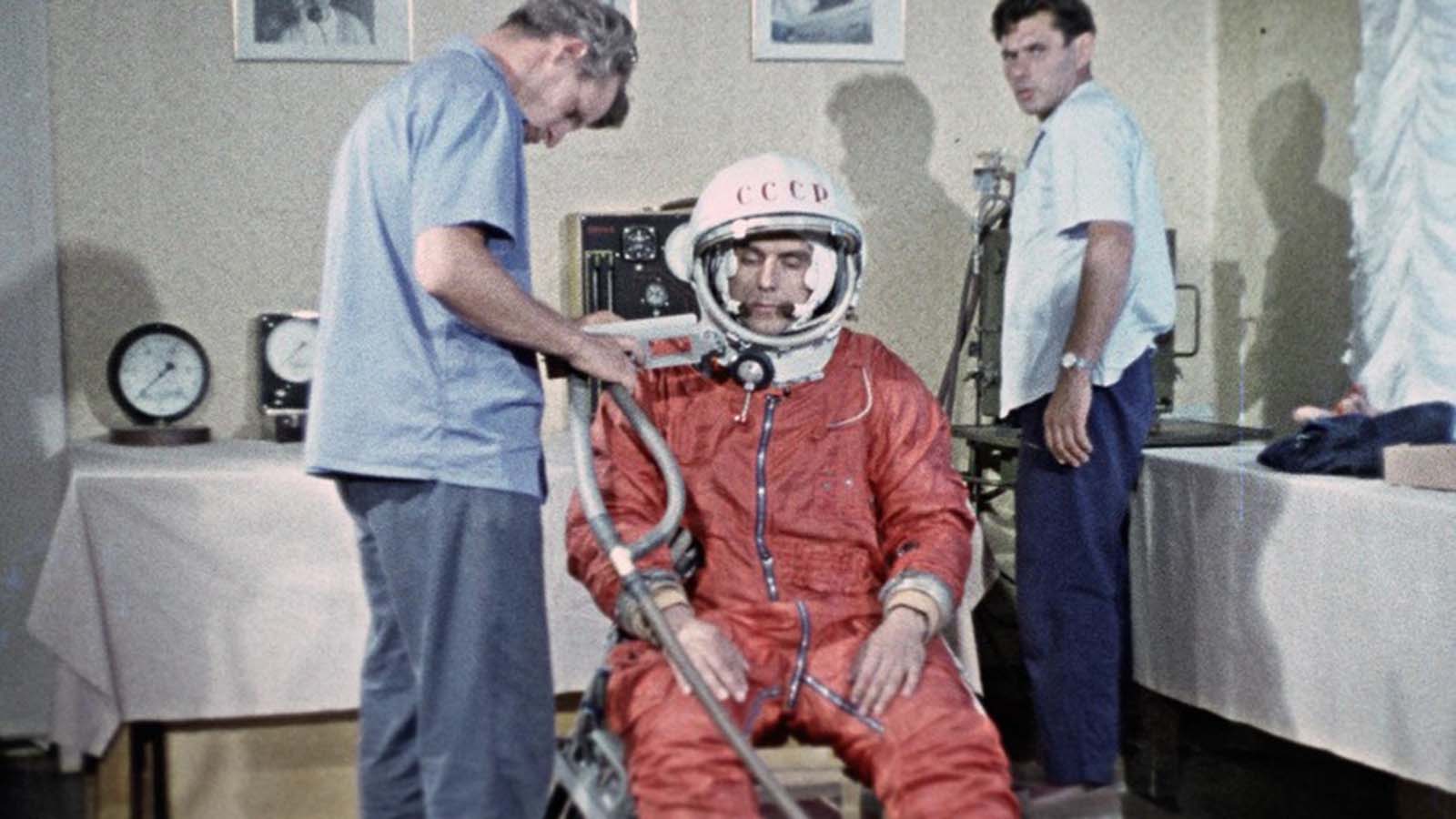
Vladimir Komarov before the fatal accident. (Photo: Sputnik).
As Vladimir Komarov climbed into the transfer van to take the ride down to the pad, he had an air of fatalistic resignation about him.
His fellow cosmonauts joshed him, trying to cheer him and get a smile. They started singing, encouraging him to join in.
By the time they reached the pad some minutes later, he was singing with them too and the mood of pessimism had lifted somewhat.
Gagarin showed up to the launch in full gear and tried to convince the crew to let him pilot the craft instead, but the crew (including Komarov) refused to let him, and Komarov flew the ship, almost certainly knowing that he was likely to die.
Eight minutes later Vladimir Komarov was in orbit operating one of the most sophisticated spacecraft ever launched.
The trouble started at once when one of the Souz’s two solar panels failed to deploy, starving the craft of electrical power and obscuring some of the navigation equipment.
Other glitches developed as the day went on. The first attempt to change the spacecraft’s orbit was unsatisfactory.
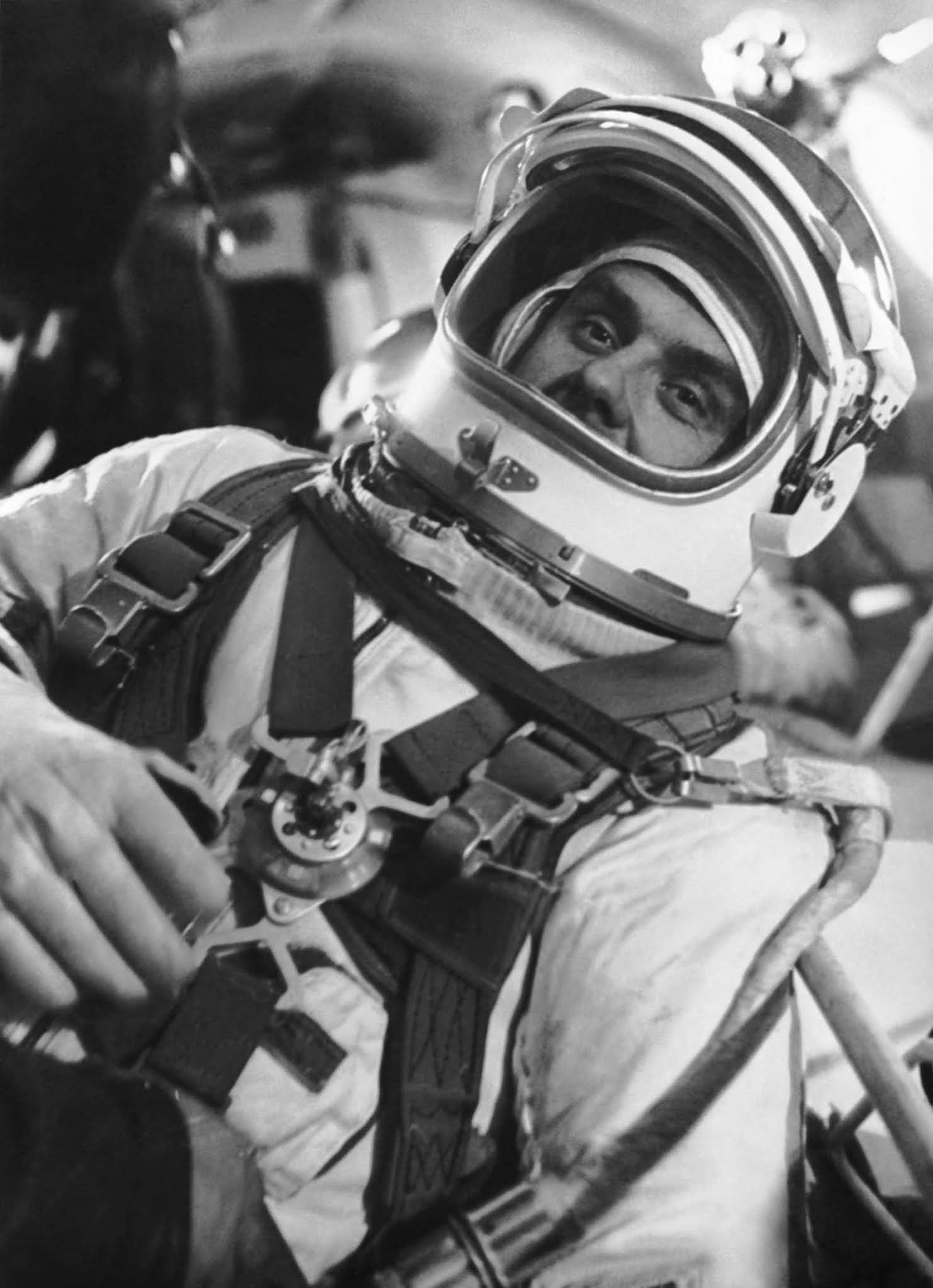
Vladimir Komarov preparing for the flight. (Photo: TASS).
The ship began to rotate around its axis and only spun more when Komarov tried to correct the problem.
The thermal control system degenerated, communications with the ground became irregular and lack of electricity prevented the astro-orientation system from operating.
Seeing all these problems the ground control decided to abandon the Soyuz 2 launch and bring Komarov home at the first available opportunity.
Komarov tried unsuccessfully to orient the Soyuz module for five hours. The craft was transmitting unreliable status information and communications were lost.
Using procedures that he had never practiced in training, Komarov managed to align the spacecraft and fire the retrorockets himself.
Despite his heroic efforts to save the mission, worse was to come. He successfully re-entered the Earth’s atmosphere on his 19th orbit but as the cabin descended through the atmosphere, the drogue parachute came out but the main parachute remained stubbornly in its container.
.jpg)
Soyuz 1 spacecraft (artistic depiction), the crash site, and Vladimir Komarov.
When the reserve chute was popped out, it tangled in the lane of the drag chute of the main parachute. Soyuz 1 crashed at great speed into the steppe at Orenberg at 7 am, killing Komarov.
The cabin exploded on impact and when Soviet Air Force recovery teams arrived all they found was burning metal, the rim of the top of Soyuz being the only hardware they could identify.
As Komarov was headed to his doom, US listening posts in Turkey heard him crying in rage, “cursing the people who had put him inside a botched spaceship”.
He told ground control officials he knew he was about to die. The Soviet premier Alexei Kosygin called on a video phone to tell him he was a hero.
Komarov’s wife was also on the call to talk about what to say to their children. Kosygin was crying. When the capsule began its fatal descent the American intelligence “picked up [Komarov’s] cries of rage as he plunged to his death”.
Some translators heard him say, “Heat is rising in the capsule”. He also used the word “killed” — presumably to describe what the engineers had done to him.

Colonel Vladimir Komarov. (Photo: Vasili Malyshev/Sputnik).
The consensus afterward was that the whole mission had been rushed before Soyuz was really ready. Vladimir Komarov’s death seems to have been almost scripted.
Yuri Gagarin said as much in an interview he gave to Pravda weeks after the crash. He sharply criticized the officials who had let his friend fly.
The Gagarin of 1967 was very different from the carefree young man of 1961. Komarov’s death had placed an enormous burden of guilt on his shoulders.
At one point Gagarin said, “I must go to see the main man [Brezhnev] personally”. He was profoundly depressed that he hadn’t been able to persuade Brezhnev to cancel Komarov’s launch. One year after Komarov’s death, Gagarin died when he crashed a fighter jet.
.jpg)
Valentina Komarov, the widow of Soviet cosmonaut Vladimir Komarov, kisses a photograph of her dead husband during his official funeral, held in Moscow’s Red Square on April 26, 1967.
Komarov was honored with a state funeral in Moscow, and his ashes were interred in the Kremlin Wall Necropolis at Red Square.
The American astronauts requested the Soviet government to allow a representative to attend but were turned down. Komarov was posthumously awarded his second Order of Lenin and also the Order of Hero of the Soviet Union.
But why did they give him an open casket service?
Komarov demanded it personally because he wanted to send a message to the government officials who had caused his death.
He knew the capsule was unsafe and that he would very likely die, he knew he would not be returning alive so he made the demand before launching. His final “revenge” was forcing his superiors to look at what they had done.


Komarov with his wife Valentina Yakovlevna and daughter Irina.

1964 USSR postage stamp honoring Vladimir Komarov.

Commemorative plaque and the Fallen Astronaut sculpture left on the Moon during the 1971 Apollo 15 mission.
Before leaving the Moon on Apollo 11’s Lunar Module, Neil Armstrong‘s final task was to place a small package of memorial items to honor Soviet cosmonauts Komarov, Yuri Gagarin, and the Apollo 1 astronauts Gus Grissom, Ed White, and Roger Chaffee.
Komarov’s name also appears on a commemorative plaque left at Hadley Rille on the Moon by the commander of Apollo 15, David Scott in memory of 14 deceased NASA astronauts and USSR cosmonauts, along with a small sculpture entitled Fallen Astronaut, on 1 August 1971.
This plaque and the sculpture represent those astronauts and cosmonauts who died in the quest to reach outer space and the Moon.
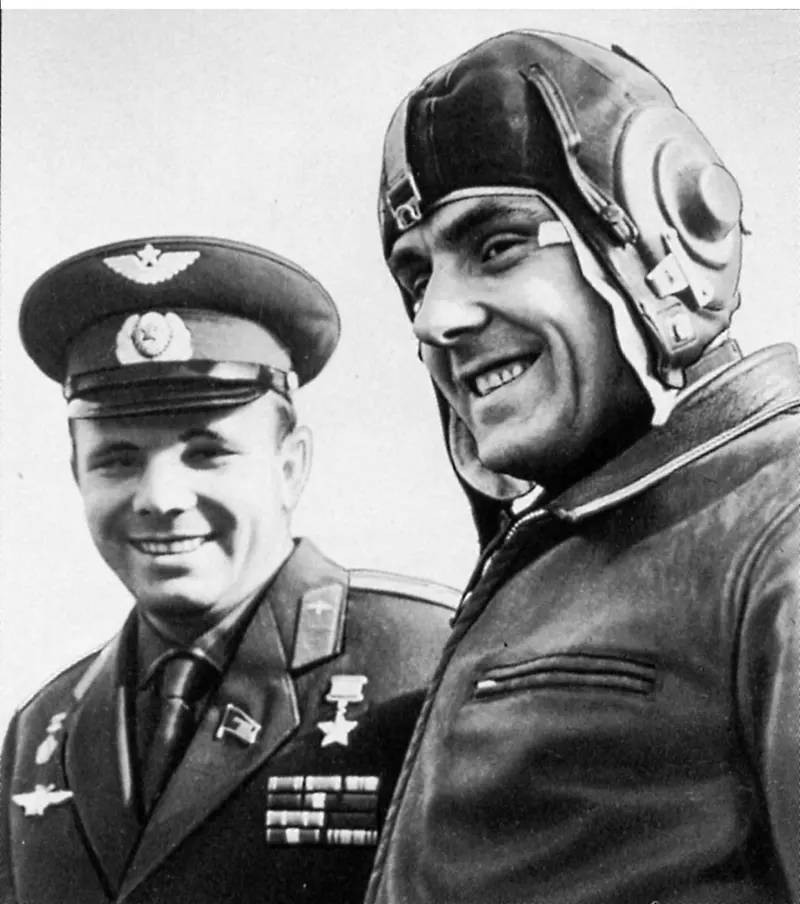
Yuri Gagarin and Vladimir Komarov.

On a previous mission. Voskhod 1 cosmonauts (left to right) commander Vladimir Komarov, doctor Boris Yegorov, and engineer Konstantin Feoktistov on their way to the launchpad, October 12, 1964. Because of the cramped dimensions of the spacecraft, they wore no space suits.
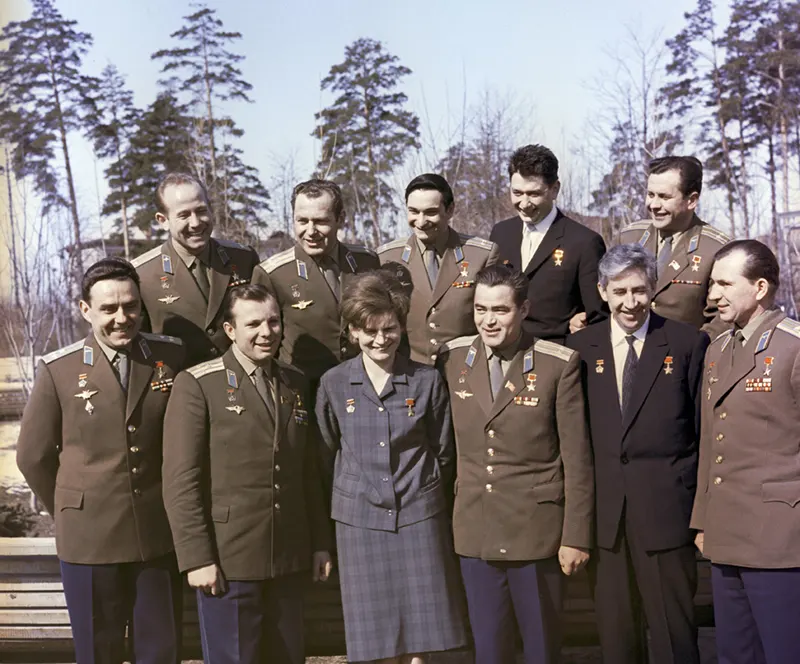
Group pictures of Soviet cosmonauts.
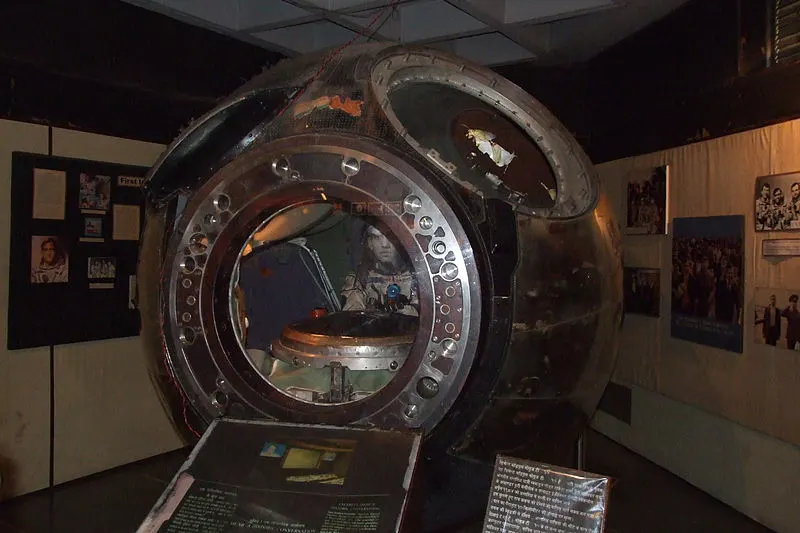
A Soyuz Capsule Similar to Komarov’s.

Voskhod Konstantin Feoktistov, Boris Yegorov, Vladimir Komarov.
(Photo credit: Wikimedia Commons / NASA / RIA Novosti / Sputnik / Photo Researchers Inc).